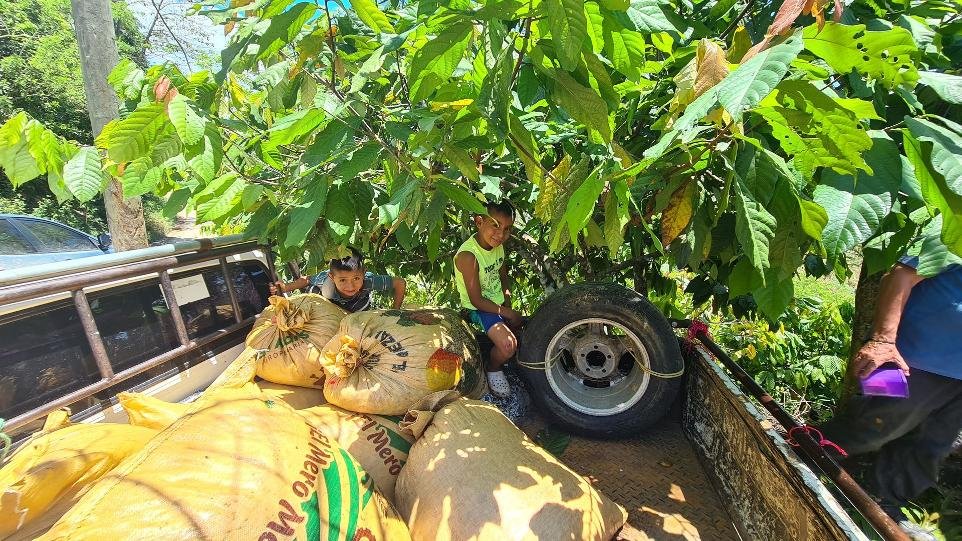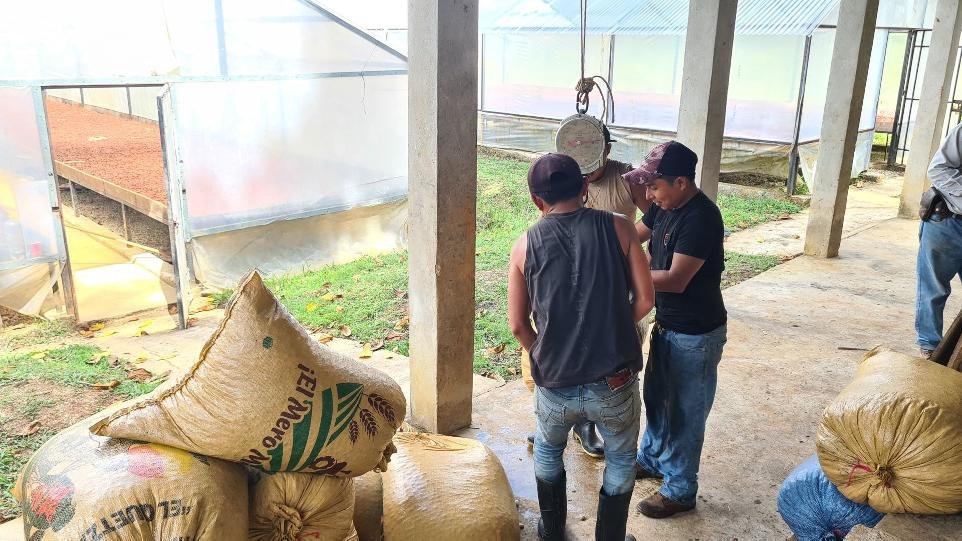Cahabon Origin
Cahabon is a small town in Alta Verapaz. It is known for its beautiful river, which connects the town to the famous Semuc Champey Park. The area is home to small-scale Q’eqchi’ farming families nestled between mountains, offering stunning views. Communities are collaborating, empowering each other, and lending a hand to their neighbours. This community culture has supported an abundant cacao production area.
The origin is supported by a local foundation and the Dokeshi project, which provides additional support in the fields, social initiatives such as a dental programme, and direct trade with the highest payments to farmers in the region.
Meet Your Farmers
This cacao origin is grown as part of a food sovereignty programme for the Q’eqchi’ community. The primary goal is for the farming families to provide nutritious meals for themselves, with cacao being a surplus to these activities.
Some communities have been practising organic farming for over 15 years now. Most of the families are certified organic, while others follow the same principles without seeking certification. One thing is certain: the land is abundant, diverse, and well cared for. The farmers are always eager to learn additional skills to better care for their land.

Genetics : Blend of local hybrids.
Flavour profile : Balanced
Fermentation : 7 days in large wooden box.
Type of environment : Small villages on mountain side valley. Young fruit forest gardens, proximity with many viviendas, surrounded by wilderness.
Region : Alta Verapaz
Altitude: 300m
Land Size : About 40+ hectares from a variety of families
Cacao Trees : Unknown
Specificities : Cacao forest mixed with Q'eqchi village.
Ownership : 54 Q'eqchi families organized in a cooperative, managed by a regenerative centre.
300m
Altitude
52,000m2
Land Size
10
Workers
Farm Description
The farming communities are located on the outskirts of Cahabon town. Several families, each with a small plot of land, come together to produce and sell their cacao. In the past, they would sell their cacao to the local ‘Coyote’, who would try to bargain for the lowest price—usually 1000 Q for 100 lbs of dry cacao. Today, the communities receive a much better price, along with social benefits. They grow the cacao alongside copal, canela, cardamom, citrus trees, corn, plantains, and much more.
Concept of the Project
The project started 30 years ago with a Swiss priest. Seeking to support the community, he turned to agriculture. With the support of a foundation, he established an agricultural school focused on food sovereignty. Cacao became a surplus product for the community to generate income. The project focuses on uniting the community through ancestral practices and the influence of the church. The nawales and Mayan history are represented through art and educational materials. Most farming communities continue to practise Mayan rituals as part of their farming activities.
Thank You Cahabon Farm!










